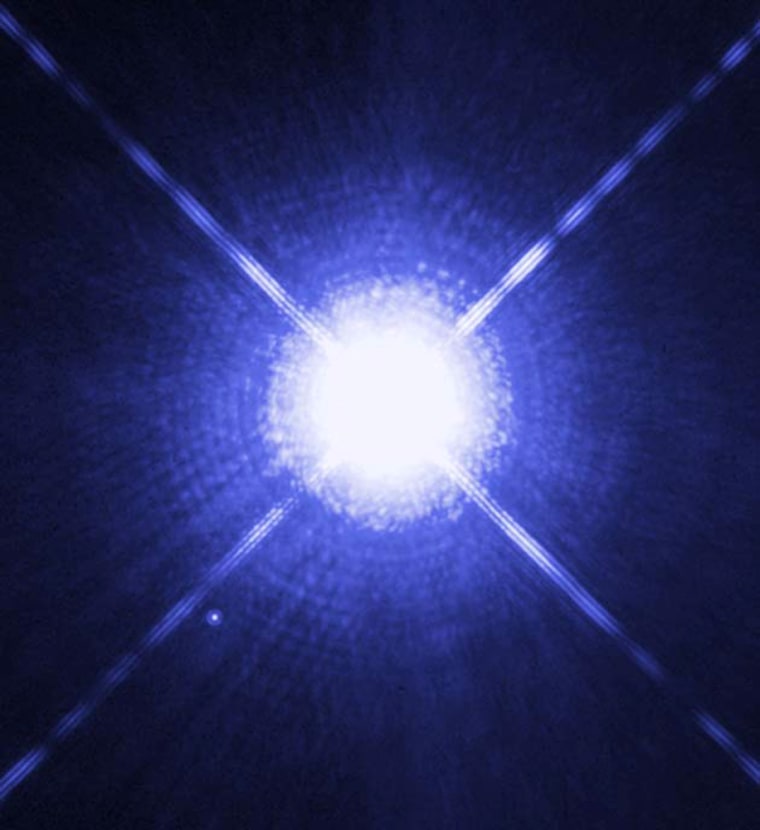The brightest star in our sky has a companion that’s smaller than Earth yet 98 percent as massive as the sun, a new study reveals.
Astronomers already knew the brilliant blue-white Sirius had a stellar companion. But they didn’t know the object’s mass. The new measurement, announced today, was done by an international team of astronomers using the Hubble Space Telescope.
Sirius is one of the closest known stars at 8.6 light-years away. It is twice as massive as the sun and has a surface temperature of 18,000 degrees Fahrenheit (10,000 degrees C).
The companion, called Sirius B, was known to be much hotter. It is the scorching ember of a sun-like star now called a white dwarf, and it’s the nearest of its kind. It was discovered in 1862 but close scrutiny is difficult because of the glare of the primary star.
“Studying Sirius B has challenged astronomers for more than 140 years," said Martin Barstow of the University of Leicester, U.K.
The white dwarf’s mass was calculated by noting how its intense gravitational field alters the wavelengths of light emitted by the main star. The results are published in the Monthly Notices of the Royal Astronomical Society.
White dwarfs are involved in explosions called Type Ia supernovas, which are used to measure cosmological distances and the universe’s rate of expansion.
“Measurements based on Type Ia supernovae are fundamental to understanding 'dark energy,' a dominant repulsive force stretching the universe apart,” Barstow said. “Also, the method used to determine the white dwarf’s mass relies on one of the key predictions of Einstein’s theory of General Relativity; that light loses energy when it attempts to escape the gravity of a compact star."
Sirius B, at just 7,450 miles (12,000 kilometers) in diameter, has an intense gravitational field. A person weighing 150 pounds (68 kilograms) on Earth would weigh 55 million pounds (25 million kilograms) performing the highly inadvisable feat of standing on Sirius B.
Based on Einstein’s theory, light from the surface of the hot white dwarf has to climb out of this gravitational field and is stretched to longer, redder wavelengths of light in the process.
The new observations also refined the measurement of Sirius B’s surface temperature to be 45,000 degrees Fahrenheit (25,000 degrees C).
Sirius resides in the winter constellation Canis Major.
